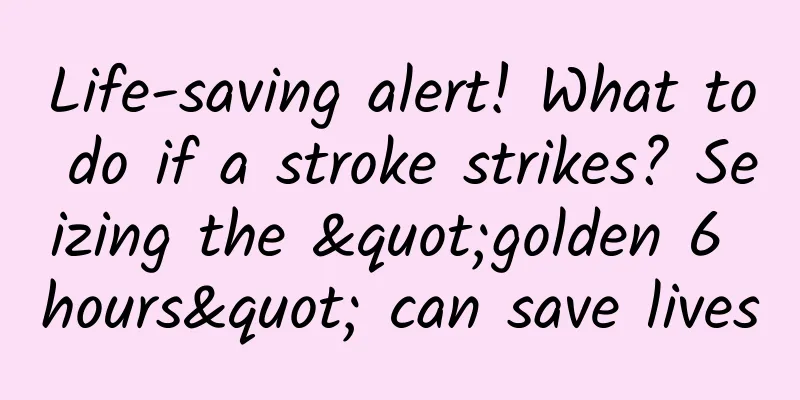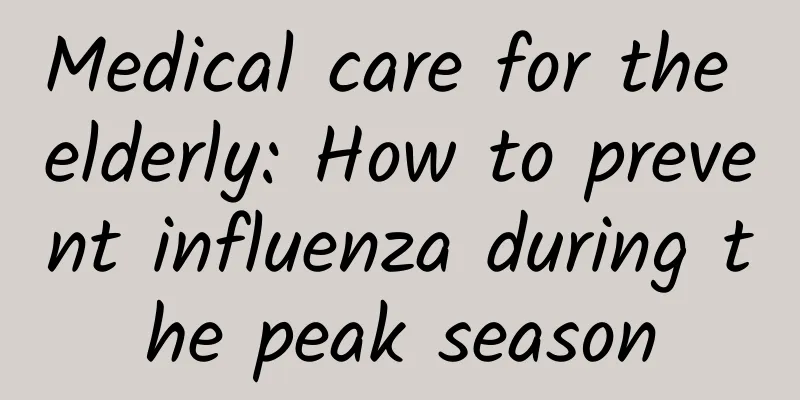Life-saving alert! What to do if a stroke strikes? Seizing the "golden 6 hours" can save lives

|
1. The importance of thrombolysis in the “life-or-death race” Yongzhou Fourth People's Hospital introduced that thrombolytic therapy is a key treatment measure after acute cerebral infarction. Cerebral infarction is caused by blockage of cerebral blood vessels, which leads to interruption of cerebral blood flow, thus causing ischemia and necrosis of brain tissue. The purpose of thrombolytic therapy is to restore cerebral blood perfusion in the shortest possible time and reduce brain tissue damage caused by ischemia. The shorter the time of thrombolysis, the more timely the patient's cerebral blood perfusion will be restored, the less brain tissue will be necrotic due to ischemia, and the patient will retain neurological function to the greatest extent, reducing the severity of sequelae. Best rescue time window: Thrombolysis within 3 hours leads to the best recovery and the least sequelae; Thrombolysis can still be achieved within 3-4.5 hours, but the effect is slightly reduced; If it lasts for more than 6 hours, a large number of brain cells will die, which may cause disability or even death. For every minute of delay, 1.9 million more brain cells die! If you delay for more than 6 hours, the risk of paralysis increases 10 times! 2. Why is it necessary to seek medical treatment nearby? 1. Time factor The treatment of cerebral infarction requires every second, so choosing a nearby hospital can shorten the time from onset to thrombolytic therapy and improve the success rate of treatment. 2. Medical capabilities At present, with the popularization of stroke emergency knowledge and the advancement of medical technology, many grassroots hospitals have sufficient and effective stroke treatment capabilities. These hospitals usually have advanced medical equipment and professional medical teams, and can provide patients with high-quality thrombolytic and thrombectomy services. 3. Practical Operation Suggestions 1. Understand the surrounding medical resources It is recommended that the public understand in advance the distribution of medical resources in their area and surrounding areas, including which hospitals have the ability to treat stroke, as well as the specific locations and contact information of these hospitals, etc. This way, decisions can be made quickly in an emergency and the most appropriate hospital can be selected for treatment. Sudden cerebral infarction, 3 steps to save life Step 1: Dial 120 immediately, key words Correct statement: "Someone here may have had a stroke! Symptoms are [crooked face/weak hands/slurred speech], address is Unit X, Building X, XX Community, XX Road, please send an ambulance as soon as possible!" Never say: "My family member is not feeling well, please come quickly" (this way emergency personnel cannot give priority!) Step 2: Learn the "FAST" rapid identification method (family members must learn it!) F (Face) : Smile and see if the corners of your mouth are crooked A (Arm) : Raise both arms horizontally and check if one side is weak and drooping S (Speech ): Speak a simple sentence, whether it is unclear T (Time) : If any symptom occurs, immediately write down the time of onset and call 120! Step 3: While waiting for the ambulance To do: Let the patient lie flat with the head tilted to one side (to prevent vomiting and choking); Loosen your collar and belt to keep breathing unobstructed; Record the time of onset (doctors must ask!); Prepare your medical insurance card, medical records, and regular medications. Don’ts: Feed water and medicine (may cause choking!); Pinching and slapping the philtrum (useless!); Hesitate and wait and see (cerebral infarction will not heal itself, delaying it will be fatal!). 2. Stay calm and call emergency services If someone is found to have symptoms of cerebral infarction, you should remain calm and immediately call the local emergency number (such as 120) to inform the patient's specific symptoms and location so that emergency personnel can respond quickly. 3. Cooperate with emergency personnel While waiting for the emergency personnel to arrive, you can try to keep the patient calm and avoid strenuous exercise or emotional fluctuations. At the same time, prepare the patient's relevant documents and medical history so that they can be treated quickly after arriving at the hospital. Source: Department of Neurology, Yongzhou Fourth People's Hospital Follow @湖南医聊 to get more health science information! (Edited by Wx) |
>>: My hands are swollen, is it because of washing hands?
Recommend
How long does it take for postpartum stitches to heal?
Whether it is a natural birth or a caesarean sect...
Do mustard and horseradish taste the same? How to eat mustard
Mustard is slightly bitter and has a spicy aroma....
Can mild obsessive-compulsive disorder be cured through self-regulation? What should be done if it is severe?
Author: Jiang Changqing, Chief Psychologist, Beij...
How many days does menstruation usually last?
During menstruation, due to the different physica...
How many months does premature birth usually last?
Giving birth before 32 weeks of pregnancy is call...
How to take care of your uterus?
Female friends must know that their uterus is a v...
Benefits of hip opening for women
In the yoga fitness industry, there is only one v...
Can I masturbate to orgasm when I am 3 and a half months pregnant?
Pregnancy is a long process for pregnant women. F...
Why does the skin on the chest turn red after weaning?
The breasts are a very important part of a woman&...
What causes irregular size of gestational sac?
Many pregnant women will be told by their doctors...
What is the difference between Alipay's Idle Money Earn and Yu'e Bao? How is the Idle Money Earn interest calculated?
Alipay's Idle Money Earn is quite reliable. A...
What causes pain on the right breast?
Breasts are the part that women value most, becau...
The darker the egg yolk, the more nutritious it is? Does sweating when you move mean you are weak? Here comes the July science rumor list →
1.The darker the egg yolk, the more nutritious it...
Is the residue from medical abortion high echo?
Medical abortion is a method of abortion that mor...
How much water is the healthiest thing to drink every day? There is a formula to calculate
In life, "thirst" is usually a signal t...


![[Medical Q&A] Do you know that there is a type of stroke called "venous stroke"?](/upload/images/67f0f1cec6bf6.webp)






